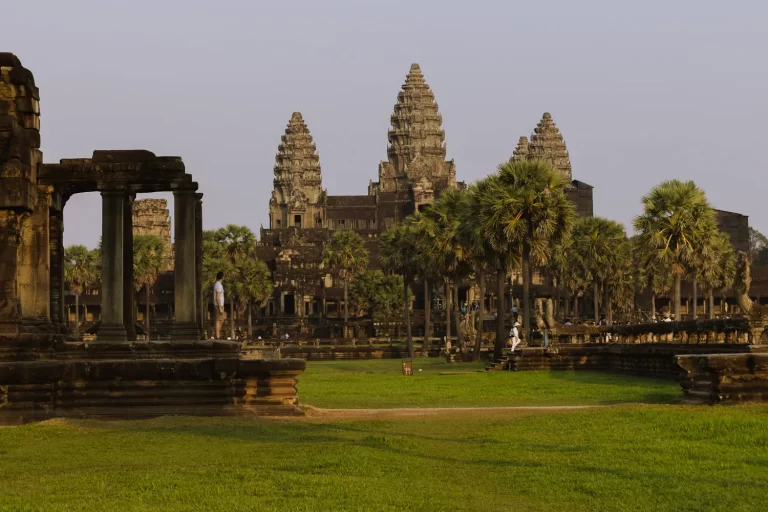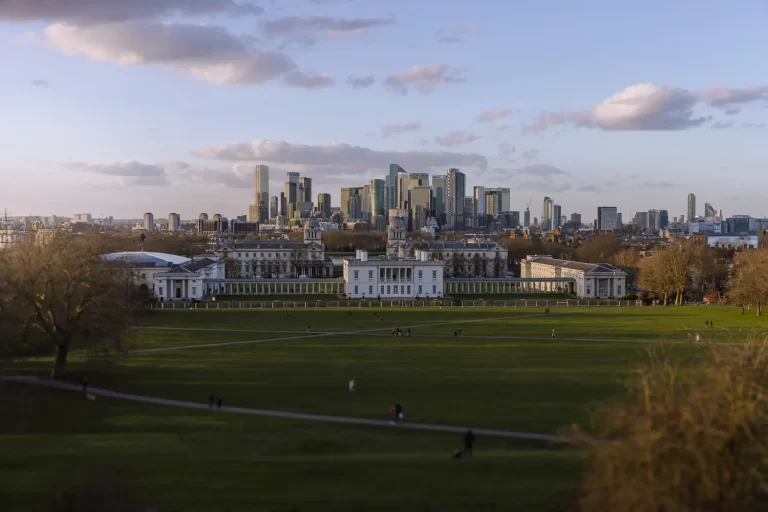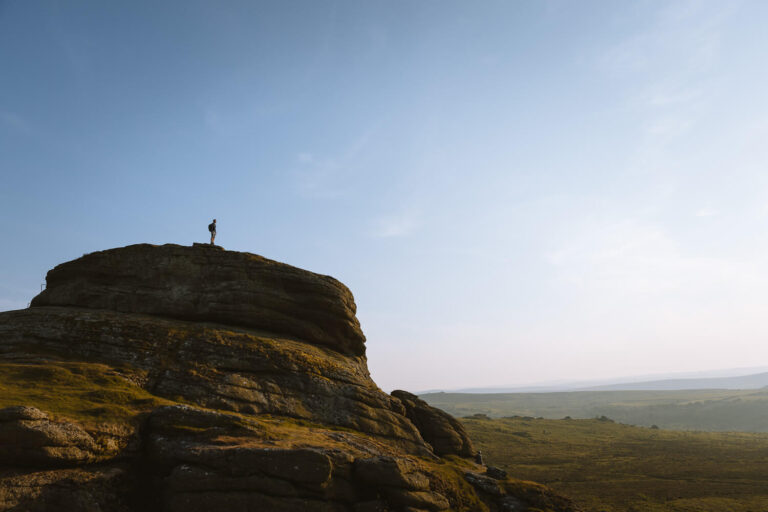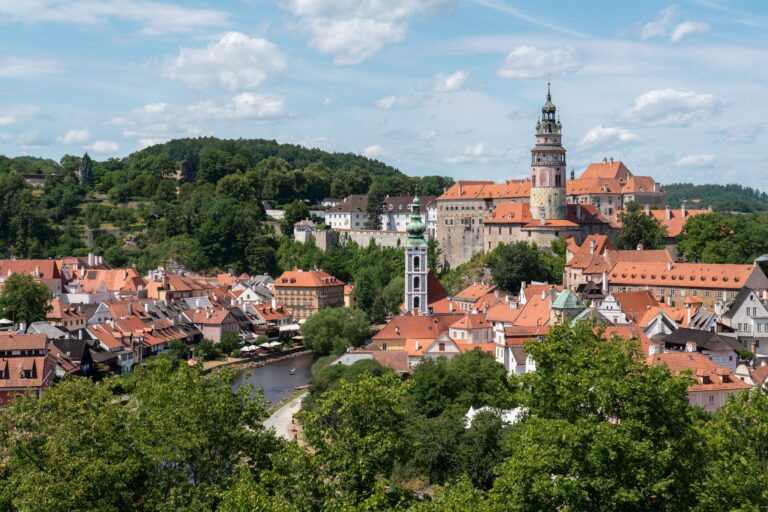8 Best Places To Visit In The Atlas Mountains (Map + Tips) | Anywhere We Roam
The Atlas Mountains offer breathtaking landscapes, remote Berber villages, and historic Kasbahs. Explore a traditional way of life and sublime scenery well off the regular tourist trail.
LAST UPDATE: 18 Oct 2023
Anywhere We Roam is reader-supported. When you buy through links on our site, we may earn a small affiliate commission at no extra cost to you. Thanks for your support – Paul & Mark.
Beneath mountains capped with snow, rivers cut an oasis of life through dramatic red rock canyons.
Women tend to fields while shepherds escort their nomadic flocks. Children play in riverbanks and local markets buzz with Berber life.
The mountains of North Africa are diverse and rugged. The Atlas Mountains in Morocco are no exception.
Take a wonderful day hike through a dramatic valley. Explore surreal red rock canyons. Visit evocative ruined Kasbahs immortalized on film.
The Atlas Mountains have always been the highlight on our trips and many are included on our top places to visit in Morocco.

MOROCCAN EARTHQUAKE, SEPTEMBER 2023
The earthquake in September 2023 devastated many of the villages in the Atlas Mountains. The epicenter was in the province of Al Haouz, which had the highest number of casualties.
Many of the roads were destroyed and repairs will take time. Additionally, hotels have considerable structural damage and many locals are homeless and sleeping in tents.
Tourism is extremely important for this part of Morocco, so we will keep this page updated once the authorities deem it safe to return.
- Ourika Valley is open as usual.
- Imlil received less damage than other areas, but check your accommodation options first.
- Ouirgane was badly damaged and it’s not advisable for travel at the moment.
- Ouzade Falls are fine to visit on a day trip.
- Aït Bouguemez is possible but check your exact destination in advance.
- Aït Ben Haddou did not receive significant damage and travel is ok providing you check ahead.
- Dades and Todra are both ok to visit.
WHERE ARE THE ATLAS MOUNTAINS?
The Atlas Mountains are a series of mountain ranges extending for almost 2,500 kilometers (1,600 miles) across North Africa. They pass through Morocco, Algeria, and Tunisia, separating the Sahara Desert from the Mediterranean Sea.
The High Atlas Mountains are in central Morocco and reach a height of 4,167 meters. This is the highest and most dramatic section of the Atlas Mountains.
On the northern and western edges, more rainfall and gentler slopes create lush green valleys. This ecosystem supports the traditional Berber way of life.
The southern edge is much drier and rockier. Here, red rock canyons weathered over the years have smoothed into breathtaking shapes.

1 – OURIKA VALLEY
Best destination in the Atlas Mountains for a short trip from Marrakech
The Ourika Valley lies in the foothills of the Atlas Mountains. Its expanse of terraced fields and cascading waterfalls are a dramatic change from the dusty Moroccan plains.
Most head to Setti Fattma, the last small town on the paved road that heads up the Ourika Valley. It is the departure point for day hikes into the Atlas Mountains, the most popular of which visits 7 waterfalls.
You can go for a stroll, take a (very chilly) dip, and sit at restaurants perched over the river.
In March and April, the cherry and almond orchards are stunning, So are the wildflowers that cover the picturesque riverside.
At just over a one-hour drive from Marrakech, it is an escape to a cooler climate. As a result, it can get very busy. But, if you are short on time it’s a great day trip.
Book // Day tour to Ourika Valley

2 – IMLIL AND MOUNT TOUBKAL
Challenging hikes in the highest peaks of the Atlas Mountains
Imlil is a small village that has become the center for high mountain trekking.
It may lack the charm and tradition of other Berber villages in the Atlas Mountains, but it makes up for it in adventure and scenery.
Imlil is surrounded by often snow-capped peaks, the highest of which is Mount Toubkal at 4167 meters.
Almost everyone who makes the journey to Imlil is here for one thing: hiking.
There are several short day hikes around the valley and multi-day treks to the highest peaks.
The most popular is the hike eastwards to the summit of Mount Toubkal. You can finish the hike in as little as two days, or over five days via a more relaxing route.
Another great option is to hike west to the Azzadene Valley and Ouirgane. This is home to some of the most traditional Berber villages in the area.

3 – OUIRGANE VALLEY
Best for visiting traditional Berber villages in the Atlas Mountains
Ouirgane is lower altitude and much warmer than Imlil.
The valley floor near the riverbanks is enriched with plums, blackberries, olives, figs, and almond trees. Whereas up in the hills, onions, potatoes, alfalfa, wheat, and barley sustain a very rural way of life.
It’s a great destination to see how the Berbers make use of this very special landscape.
You can stay in authentic, but very nice accommodation, close to traditional Berber living. Share a meal with your Berber host. Then end the day lazing by the pool.
WHAT TO DO AROUND OUIRGANE
- Take a guided walking tour up to local villages.
- Hike into the Azzadene Valley.
- Driving to Assif Zagawari for stunning scenery.
Read more in our guide to visiting Ouirgane.



4 – CASCADES D’OUZOUD
The most dramatic waterfall in the Atlas Mountains and an easy day trip from Marrakech
The Ouzoud Falls are the most impressive in Morocco and a popular day trip from Marrakech.
Tumbling a total of 110 meters, the falls are beautifully nestled in a jungle paradise. It can be a relaxing relief from the harsh Moroccan sun.
There are a variety of interesting walks around the canyon and plenty of restaurants to stop for lunch while taking in the scenery.
A path zigzags down the valley wall as spray from the falls clings to dense green foliage and cools the air.
The signs forbidding swimming are ignored by tourists and locals alike. Boat rides are available for very affordable prices to get a unique vantage point of the falls.
Tour // Day trip from Marrakech to Ouzoud Waterfall


5 – AÏT BOUGUEMEZ
The best destination for the untouched side of Morocco
Set in the northern reaches of the High Atlas mountains, many say Aït Bouguemez is the most beautiful valley in Morocco.
A patchwork of wheat and barley fields are fed by a maze of irrigation channels dropping from terraced hills.
It’s a sea of green under the towering rocky summit of M’Goun Massif – the third highest in Morocco.
Berber villages dot the landscapes, and their way of life is ever-present in the valley.
There are a few riads and hotels providing accommodation and meals, but beyond that facilities are limited.
Getting here is a little trickier than in other Atlas Mountain destinations.
The paved roads were only completed at the turn of the century and can be a little hairy in places. But providing you take care, it’s a great experience. The scenery between Demnat and Aït M’Hamed is particularly stunning.
Aït Bouguemez is excellent for village-to-village hiking in Morocco.


6 – AÏT BEN HADDOU & OUNILA VALLEY
Best place in the Atlas Mountains for exploring ruined ksars and kasbahs
The Ounila Valley carves its way from the high Atlas Mountains to the barren plains just north of the Sahara Desert.
For centuries, it was the caravan route between Marrakech and the Sahara. Tradesmen came to exchange their wares while the powerful extracted their taxes.
The remnants of that power is still clear in the magnificent decaying homes of Telouet Kasbah and Tamdaght Kasbah. Also in the fortified towns of Anmiter and Ait Ben Haddou that line the valley floor.
It’s a stunning landscape of grand ruins set on the edge of rocky red canyons.
Several films have taken advantage of the landscape including Gladiator, Jesus of Nazareth, Kingdom of Heaven, and Prince of Persia.
The well-paved road that connects the ruins is a fantastic and easy drive.
While the southern end of the valley around Aït Ben Haddou can get busy with tourists, the northern end is just as impressive and has almost no one there.



7 – DADÈS VALLEY
The picturesque green oasis and red rock formations
While the northern and western sides of the Atlas Mountains are greener and richer in life, the southern side is a sea of boulders and rock.
Snowmelt from the High Atlas Mountains has cut deep ravines and dramatic valleys. The Dadès Valley is one of the most impressive.
Driving in from the south, the red rock valley gradually narrows until it is a little wider than the road. The drive to Café Timzzillite is the popular Instagram location in the valley, but there’s so much more to see.
The slot canyons and rivulets of Monkey Fingers are breathtaking to explore on foot. Pass beautiful villages, friendly people, nomadic camps, and stunning scenery.
We highly recommend a night at Auberge Chez Pierre for incredible Moroccan cooking in a stunning setting.
We included this area on our 10-day Moroccan road trip.


8 – TODRA GORGE
Best for dramatic scenery amongst red rock canyons
Just a couple of hours east of the Dadès Valley is the Todra Gorge.
The most dramatic of the red rock canyons in Morocco, it’s almost 200 meters high and only 10 meters wide at its narrowest point.
It opens out into the Tinghir Oasis, a massive swathe of green breaking the monotony of the desert. It is a remarkable contrast of red rock boulders and swaying green palms.
The town of Tinghir makes this a much busier place, but drive some of the back roads and you quickly find yourself all alone.
We also highly recommend this Todra Gorge hike.
Alternatively, stay at Auberge le Festival and follow their network of signed footpaths or ask them to provide you with a guide.
From Todra you can continue south and east to the Sahara or north across the Atlas Mountains. The paved road to Agoudal and Imilchil is a glorious journey into a much less visited side of Morocco.


ATLAS MOUNTAINS MAP
To help you get your bearings, our map includes all the top places to visit in the Atlas Mountains in this guide. We have also included our assessment of the road quality for each of the main passes you would need to take.
How to use this map / Click on the top left of the map to display the list of locations, then click on the locations to display further information. Click on the top right corner of the map to open a larger version in a new tab or the star to save to your Google Maps.
HOW TO GET AROUND THE ATLAS MOUNTAINS
The Atlas Mountains are more remote but surprisingly accessible for most travelers. There are 4 ways to get around:
- Take Morocco’s public transport;
- Join a tour in a grand taxi;
- Drive yourself;
- Take a private tour.
PUBLIC TRANSPORT
There are two bus companies catering to tourists, CTM and Supratours.
Both run regular buses between Marrakech and Ouarzazate which take 4 hours and 30 minutes including a 25 minute break. However, they do not stop at any tourist destinations on route.
Supratours also runs infrequent services to Kalaat M’Gouna at the bottom of the Roses Valley and Tinghir at the bottom of the Todra Gorge Valley.
GRAND TAXIS
Grand Taxis are better for getting to some of the smaller towns and villages.
Grand Taxis are large cars that take 4 to 6 people. They run between fixed destinations at a fixed price, but only go when they are full.
In the cities they tend to be quite modern but the more remote you are the more likely you’ll be in a clapped-out banger. It can be a social way to travel and a good way to connect the cities to the more remote destinations like Aït Bougmez, Ouirgane and Imlil. Patience is required, however.


DRIVING IN THE ATLAS MOUNTAINS
Once you have arrived at the city or village, you often need to make your way to other sights or attractions.
So a better option to explore the Atlas Mountains is to self-drive.
Driving in the Atlas Mountains is easier than many think. The main roads are well paved and well signed, petrol stations are frequent, and traffic is usually fairly light.
There are so few road choices that navigation is easy with Google Maps. A road trip in the Atlas Mountains is by far the best way to see the area.
We have some tips in our guide to driving in Morocco.
DO YOU NEED A 4×4 IN THE ATLAS MOUNTAINS?
Recently, the road through the Ounila Valley was paved, so all the sights on this list can be accessed by any confident driver in a 2WD.
The exception is Aït Bouguemez which has a paved road but was in very poor condition on our last trip. While locals happily bounced along in a 2WD, I suspect most tourists would be happier in a 4×4.
The added bonus of hiring a 4×4 means you can head off the main roads and explore.
These more remote roads can be anything from disintegrating paved roads to gravel piste or boulder-strewn steep tracks. Clinging to narrow tracks on the edge of precipitous valleys as you headed to tiny villages is a lot of fun and enables you to see a very rural and remote side of Morocco.
If you have any questions about road quality or which areas or routes you might want a 4×4, then please ask us in the comments below.

TOURS TO MOROCCO’S ATLAS MOUNTAINS
If driving yourself or waiting for buses all sounds like too much hard work, then there are loads of tours zipping around the Atlas Mountains.
The main hub for tours exploring the Atlas Mountains is Marrakech (with its international airport) in the north. Although bit by bit Ouarzazate, in the south, is also starting to offer a range of trips.
Tours usually last 1 to 4 days. Here is a sample of the best tours to the Atlas Mountains.
WHEN TO VISIT THE ATLAS MOUNTAINS?
The Atlas Mountains are at their most beautiful in spring when flowers line the valley floor and the crops are a bright green. However in early spring snow can be slow to melt and high rainfall can wash away the rock that supports the roads, making them impassable. So an ideal time to visit is mid-April to late May.
In summer the temperatures rise, the wheat and barley turn brown and the snow leaves the tops of the mountains making the whole scene slightly less picturesque. The heat can also be stifling at lower altitudes making walking draining.
After the summer temperatures drop, September to October is also a great time to visit although the colours are not as vibrant as in spring.
Finally, avoid the winter months from December to March. Snow can cover the high mountain roads making them impassable.

THANKS FOR VISITING // WHERE NEXT?
A BIG THANK YOU
We’ve been providing free travel content on Anywhere We Roam since 2017. If you appreciate what we do, here are some ways you can support us.
Thank you!
Paul & Mark
FOLLOW US ON INSTAGRAM
USE OUR RESOURCES PAGE









